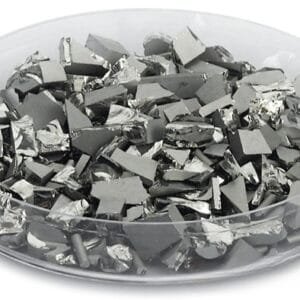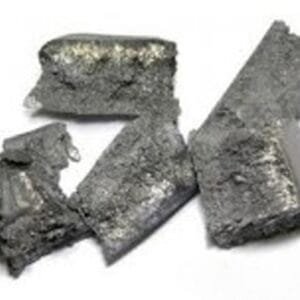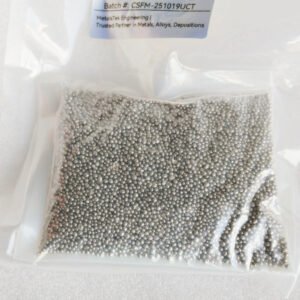Thulium Evaporation Materials Description
Thulium is a silver-white metal with the symbol Tm. It is both ductile and soft, and can be easily cut with a knife. With a presence of just 2 parts per 100,000 in the Earth’s crust, thulium is the rarest of the rare earth elements. It finds applications in various fields, including high-intensity power generation light sources, lasers, and high-temperature superconductors.
High-purity thulium evaporation materials are crucial for achieving superior film quality in deposition processes. TFM specializes in producing thulium evaporation materials with purity levels up to 99.99%, employing stringent quality assurance measures to ensure product reliability.

Thulium Evaporation Materials Specification
| Material Type | Thulium |
| Symbol | Tm |
| Color/Appearance | Silvery White, Metallic |
| Melting Point | 1,545 °C |
| Density | 9.32 g/cc |
| Thermal Conductivity | 0.169 W/cm/K |
| Synonyms | Thulium Pellets, Thulium Pieces, Thulium Evaporation Pellet, Tm Pellets, Tm Pieces, Tm Evaporation Pellet |
Thulium Evaporation Materials Application
- Deposition Processes: Utilized in semiconductor deposition, chemical vapor deposition (CVD), and physical vapor deposition (PVD).
- Optics: Applied in wear protection, decorative coatings, and displays.
Thulium Evaporation Materials Packaging
Our thulium evaporation materials are handled with care to prevent damage during storage and transportation, ensuring the products maintain their original quality.
Contact Us
TFM offers thulium evaporation materials in a variety of forms, purities, sizes, and price ranges. We are dedicated to producing high-purity e-beam evaporation materials with optimal density and minimal average grain sizes. For current pricing on evaporation pellets and other deposition materials not listed, please contact us with your inquiry.


 MSDS File
MSDS File



Reviews
There are no reviews yet.